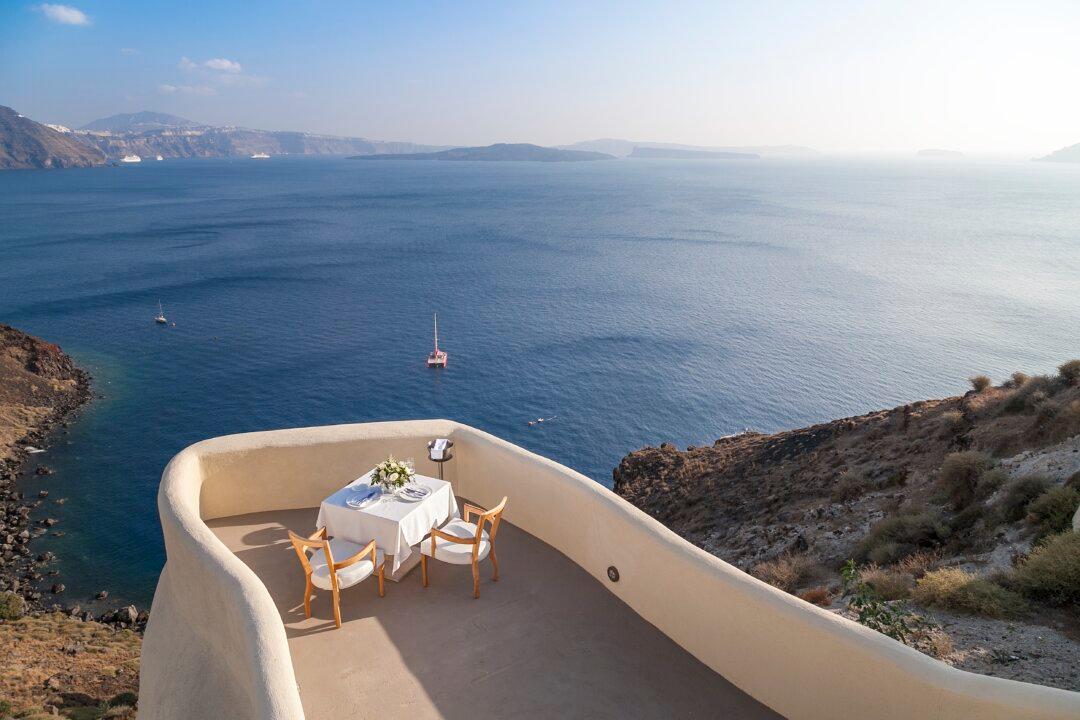It doesn’t matter where you go on this small island, you’ll find a feast for the eyes, like the clusters of white buildings that cling to the edge of plunging black cliffs, or the fire and fury of the ancient volcano, its remnants still steaming out in the middle of the caldera.
You can walk on black beaches and swim at red ones, and dine on octopus at small restaurants in Fira, Santorini’s capital, your table just inches from a sheer drop. And at the end of the day, you will probably gather with the masses to revel in the late-day glow of the waning sun, a ball of fire ever redder as it drops to the sea past the blue-domed roofs of Oia.





